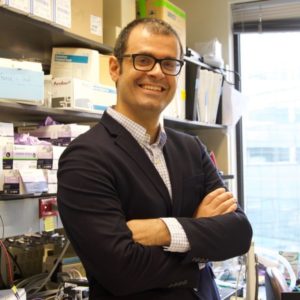
Electrical and computer engineering assistant professor Benjamin Sanchez recently accepted a research contract with major semiconductor company, Maxim Integrated, to develop a next-generation wearable bioimpedance device.
Military and medical professionals have been using wearable technology for decades, however, it has only recently been made available to the public. Consumers are likely most familiar with devices that track information such as calories burned or daily steps taken. While this information may be useful, it provides little insight into the health condition of that individual. Sanchez’s lab is working to bridge this gap by developing a device that will provide meaningful clinical outcomes.
“This research contract will allow us to explore possibilities for a new generation of wearable devices using Maxim Integrated’s technology. We are working to provide clinically accurate health-related data that can be worn on the wrist or as a patch,” Sanchez said.
This was first achieved by Apple when it built electrocardiogram technology into its watch to track symptoms such as rapid or skipped heartbeats. Its ECG function uses three electrodes to allow consumers to capture and record their symptoms. Sanchez’s team is exploring potential applications for a wearable technology that uses four electrodes.
The project will be split into two phases. The first is investigational and will focus on characterization and bench performance testing. After this initial phase, Sanchez anticipates his lab will develop a case use.
Sanchez expects to see significant advancements in this technology over the next ten years and hopes that his lab will be at the forefront of the change.
Learn more about Sanchez’s lab here.